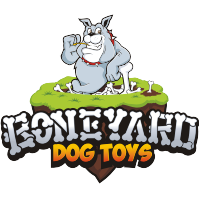Turn fetch into a fun teaching moment
Recall or the command to come is one of the essential commands in obedience training. When you tell your dog to come, it needs to be immediate and without question.
Fetch can be a great teaching moment
The game of fetch
Because of the importance of the recall command, it is only used when absolutely neccessry or during training. It should never be used prior to a disciplinary action. For example, you hear your dog barking, you go to the door and command him to come and when he arrives you place him in a timeout. What the dog understands is that he was just placed in timeout for coming when called.
When you call your dog to come, he needs to know it will be a positive experience when he arrives. This is what will keep him coming when you call.
Furthermore, when you call, it should always be in a happy, excited tone for maximum effect. Never use their name to mean come. Use a command word like "come" or "here" that is reserved for the one purpose, recall.
To maximize your dog's enthusiasm for returning, be sure to surprise him with a reward. Mix it up, sometimes its his favorite treat, sometimes its an impromptu walk and sometimes its vigorous playtime for a few minutes.
The key to success with recall is simple. When your dog here's the command to "come" he knows something fun is about to happen when he arrives, guaranteed.
How can the game of fetch help with recall?
If your dog enjoys chasing a ball and will bring it back, this is a great opportunity to reinforce the command to come.
When playing the game fetch, its important to pay attention to the timing of when you call "come". Once you have thrown the ball or whatever they enjoy playing fetch with, wait until after they have picked up the toy. There is a moment when their brain has switched from the act of chasing and picking up the toy to now making a decision to return to you. Your goal is to reinforce the decision to return to you by implanting the command "come" at that moment.
When you give the command it must be direct but in an excited tone. You want them to recognize that returning to you leads to more fun. Repetition will solidify the behavior especially if you've thrown in excitment, praise and a variety of different rewards.
If your dog is only so-so at bringing back a thrown toy, its best to work on the command to "come" in isolation for maximum effect, not as part of the game of fetch.
To improve their game of fetch, start by using a toy your dog really responds to. This may take some experimentation. It might be a ball, a stuffed animal or a rope toy. Toss it a short distance and see if they even chase after it. You may need to rub something tasty on it to get them to chase it when thrown. Have treats ready for when they return. Trade them a treat for the toy. Now repeat but throw the toy a few feet farther. Praise and reward when they return.
Once your dog is consistently returning to you with the thrown toy, then try incorporating the command to "come" while playing fetch. Remember, time the use of the command "come" when asking them to bring back the toy and use an excited voice. Praise and reward when they return.
Sign up for our FREE report.
"What Trainers Say About Using Toys During Training"

To receive a digital copy of our 15-page report, click on the eReport image above. The book covers some interesting applications of toys used by dog trainers to reinforce behaviors.
Your email address is totally secure and will only be used to send you the report.

